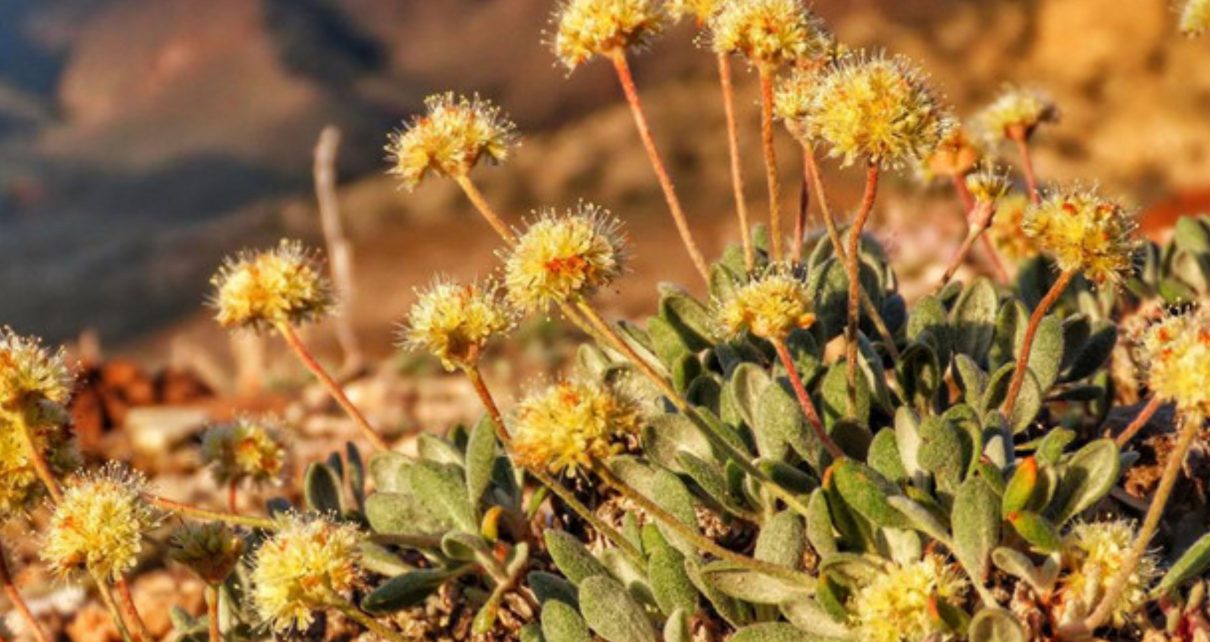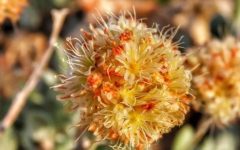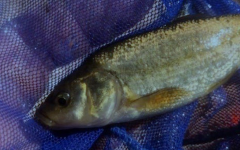
A Rare Nevada Wildflower Has Been Classified as Endangered Beside a Lithium Mine
By TheNevadaGlobeStaff, December 19, 2022 7:54 am
RENO, Nev. (775 Times, NV Globe) – The only area where a Nevada wildflower is known to survive is on a high-desert ridge where a lithium mine is planned to help fulfill soaring demand for electric vehicle batteries, according to US wildlife officials.
The Fish and Wildlife Service’s formal listing of Tiehm’s buckwheat and its associated designation of 910 acres (368 hectares) of critical habitat for the 6-inch-tall (15-centimeter-tall) flower with yellow blossoms presents another possible obstacle for President Joe Biden’s “green energy” plan.
The agency found that Tiehm’s buckwheat is on the verge of extinction, with an estimated remnant population of only roughly 16,000 plants.
“We find that a threatened species status is not appropriate because the threats are severe and imminent, and Tiehm’s buckwheat is in danger of extinction now, as opposed to likely to become endangered in the future,” the agency said.
The anticipated mining and mineral exploration is the most dangerous to the bloom. According to the agency, it is also threatened by road construction, animal grazing, rats who eat it, exotic species, and climate change. It claimed that in 2020, an apparent, unprecedented rat onslaught killed off almost 60% of its estimated population.
Ioneer, an Australian mining firm that has been preparing to drill for lithium on federal land midway between Reno and Las Vegas for years, claims it has established a protection plan that will allow the plant and the project to coexist.
But the classification under the Endangered Species Act puts the mining to its most onerous regulatory obligation to date.
It also highlights the difficulties that the Biden administration would have in combating climate change through an expedited transition from fossil fuels to renewables.
“Lithium is an important part of our renewable energy transition, but it can’t come at the cost of extinction,” said Patrick Donnelly, Great Basin director for the Center for Biological Diversity, which petitioned for the listing in 2019 and sued last year to expedite the plant’s protection.
The decision “provides greater clarity for the road forward,” according to the mining firm, and is “completely in line with Ioneer’s expectations” for the development of the mine site at Rhyolite Ridge in the Silver Peak Range west of Tonopah, near the California border.
“We are committed to the protection and conservation of the species and have incorporated numerous measures into our current and future plans to ensure this occurs,” Ioneer managing director Bernard Rowe said in a statement.
“Our operations have and will continue to avoid all Tiehm’s buckwheat populations,” he said.
The final listing regulation for the service will be published in the Federal Register on Thursday.
The activists who filed the lawsuit to safeguard the plant are adamant that Ioneer’s mitigation plan will not pass legal scrutiny. They have promised to go back to court if necessary to defend the buckwheat’s habitat from the drive to explore fresh lithium mines.
The blooms are located on a total of 10 acres (4 hectares) scattered across approximately 3 square miles (7.8 square kilometers). Federal authorities are forbidden from permitting any action on federal lands that might destroy, alter or adversely damage any listed species’ vital habitat.
Donnelly said the company’s newest operating plan for the first phase of the mine suggests avoiding a “tiny island of land” with 75% of its people — surrounded by an open pit mine and tailings dumps within 12 feet (3.7 meters) of the flowers.
The Bureau of Land Management is now investigating the environmental consequences of Ioneer’s most recent activities and protection plans.
However, Donnelley pointed out that the proposed scenario would “disturb and eliminate up to 38% of the important habitat for this species, harming pollinator populations, changing hydrology, removing soil, and causing subsidence,” according to the USFWS’s final listing rule released on Wednesday.
“Ioneer’s ‘Buckwheat Island’ scenario would spell doom for this sensitive little flower,” Donnelly said.
The mine is one of numerous renewable energy-related projects in Nevada that are experiencing legal or regulatory hurdles. They include another proposed lithium mine near the Oregon border and a geothermal power facility in wetlands approximately 100 miles (160 kilometers) east of Reno where the Dixie Valley toad has been designated as endangered.
“Now that the buckwheat is protected, we’ll use the full power of the Endangered Species Act to ensure Ioneer doesn’t harm one hair on a buckwheat’s head,” Donnelly said.
- Record Unemployment Among College Grads Exposes Democrats’ Failed Promises And Nevada Is Paying the Price - December 1, 2025
- Steak for Congress, Scraps for Nevadans: Inside Democrats’ Donor-Funded D.C. Lifestyle - December 1, 2025
- Stabbing Reported at Sunset Park in Central Las Vegas Valley - November 30, 2025




